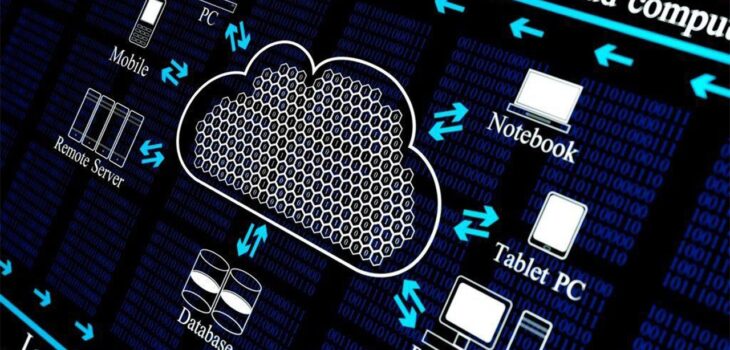 Technology
Technology
What Is Security as a Service (SECaaS)?
- by kaijose
As cyber threats continue to evolve, businesses must implement robust security solutions to protect their data and infrastructure. However, managing in-house cybersecurity can be complex and costly. This is where Security as a Service comes into play. SECaaS provides organizations with cloud-based security solutions, enabling them to enhance their security posture while reducing costs and operational burdens.
This article explores the concept of Security as a Service, its benefits, key components, and how businesses can leverage it to strengthen their cybersecurity defenses.
Understanding Security as a Service (SECaaS)
Security as a Service (SECaaS) is a cloud-based model that delivers cybersecurity solutions to organizations on a subscription basis. Instead of relying solely on in-house security infrastructure, businesses can outsource their security needs to third-party providers who offer comprehensive protection against cyber threats.
SECaaS providers offer a range of security services, including:
- Threat detection and response
- Firewall and intrusion prevention
- Antivirus and anti-malware protection
- Identity and access management (IAM)
- Data encryption and loss prevention
- Security information and event management (SIEM)
By adopting SECaaS, companies can benefit from real-time threat monitoring, automatic updates, and expert security management without the need for significant internal resources.
Key Benefits of Security as a Service
1. Cost Efficiency
Traditional cybersecurity solutions require substantial investments in hardware, software, and personnel. SECaaS eliminates these upfront costs by offering security services on a subscription model, making it a cost-effective option for businesses of all sizes.
2. Scalability and Flexibility
SECaaS solutions are highly scalable, allowing businesses to adjust their security services as they grow. Whether a company needs basic security features or enterprise-level protection, SECaaS providers can tailor their offerings to meet specific needs.
3. Access to Advanced Security Expertise
Many businesses lack the in-house expertise required to manage sophisticated cybersecurity threats. SECaaS providers employ skilled professionals who monitor, analyze, and respond to threats, ensuring the highest level of security.
4. Continuous Monitoring and Threat Detection
Cyber threats are constantly evolving, making real-time monitoring essential. SECaaS providers use artificial intelligence (AI) and machine learning (ML) to detect and mitigate security risks proactively, reducing the chances of data breaches.
5. Compliance and Regulatory Support
Many industries have strict regulatory requirements for data security. SECaaS providers help businesses comply with regulations such as GDPR, HIPAA, and CCPA by implementing robust security measures and ensuring continuous compliance.
Components of Security as a Service
SECaaS encompasses various security solutions, each addressing specific cybersecurity concerns. The following are some key components of SECaaS:
1. Network Security
SECaaS includes services like firewalls, intrusion detection systems (IDS), and intrusion prevention systems (IPS) to safeguard an organization’s network from cyberattacks.
2. Endpoint Security
With remote work on the rise, endpoint security is critical. SECaaS solutions protect devices such as laptops, smartphones, and servers from malware, ransomware, and other threats.
3. Identity and Access Management (IAM)
IAM ensures that only authorized users have access to sensitive data and systems. Features like multi-factor authentication (MFA) and single sign-on (SSO) enhance security and prevent unauthorized access.
4. Email Security
Phishing and email-based attacks are among the most common cyber threats. SECaaS providers offer email filtering, encryption, and threat intelligence to prevent malicious attacks.
5. Cloud Security
As businesses migrate to the cloud, securing cloud-based applications and data becomes crucial. SECaaS providers offer encryption, access controls, and continuous monitoring to protect cloud environments.
6. Security Information and Event Management (SIEM)
SIEM solutions collect and analyze security logs from various sources to detect anomalies and potential threats. This enhances visibility and helps organizations respond to security incidents effectively.
How Businesses Can Implement SECaaS
- Assess Security Needs: Identify the organization’s security requirements and vulnerabilities.
- Choose a Reputable SECaaS Provider: Look for providers with a proven track record and strong cybersecurity expertise.
- Integrate with Existing IT Infrastructure: Ensure that the SECaaS solution seamlessly integrates with existing systems and workflows.
- Monitor and Evaluate Performance: Regularly assess the effectiveness of the SECaaS solution and make necessary adjustments.
Conclusion
Security as a Service (SECaaS) is a game-changer for businesses looking to enhance their cybersecurity without the burden of maintaining in-house security infrastructure. With its cost-effective, scalable, and expert-driven approach, SECaaS allows organizations to focus on their core operations while ensuring robust protection against cyber threats.
By adopting SECaaS, businesses can stay ahead of evolving threats, comply with regulatory requirements, and secure their digital assets effectively. As cyber risks continue to rise, investing in Security as a Service is no longer an option but a necessity for organizations of all sizes.









